Planning a summer trip and torn between Italy and Turkey? Both have sunny beaches, stunning cities, rich history, and mouthwatering food. But the vibe? Totally different.
Italy has that relaxed charm with pasta, piazzas, and wine-filled evenings, while Turkey offers a mix of East and West, with buzzing bazaars, ancient ruins, and flavors that’ll blow your mind. Whether you’re dreaming of the Amalfi Coast or the turquoise waters of Antalya, this blog breaks down what summer in each country feels like, and what you’ll see, do, and definitely eat.
So, if you’re stuck choosing between the two, keep reading. This blog will help you pick the summer adventure that best suits you.
A Taste of Summer in Italy
Italy in summer is pure magic! The warm sun, endless days, and a pace that makes you feel like you’ve stepped into another world. Imagine strolling down charming cobblestone streets with gelato in hand, soaking in the golden glow of a coastal sunset, or relaxing at a cozy café where time slows down. The Italian way of life encourages you to take it easy, and once you’re there, you’ll never want to rush.
So, what’s summer in Italy really all about? Up next, we’re breaking it down. From what you can expect weather-wise and vibe-wise to the top places to see and, of course, the amazing food you’ll want to eat every single day, let’s get into it. And if you’re planning your trip, make sure you check off everything on your travel checklist to make the most of your Italian summer adventure!
What You’ll Experience in Italy This Summer
Festivals That Bring the Energy


Summer in Italy is full of local festivals, and they’re anything but low-key. One of the biggest is the Palio di Siena, a wild horse race that takes over the streets of Siena in July and August.
You’ll also find smaller village festivals celebrating local food, wine, and traditions, perfect for getting a real taste of Italian culture.
Live Music and Open-Air Concerts
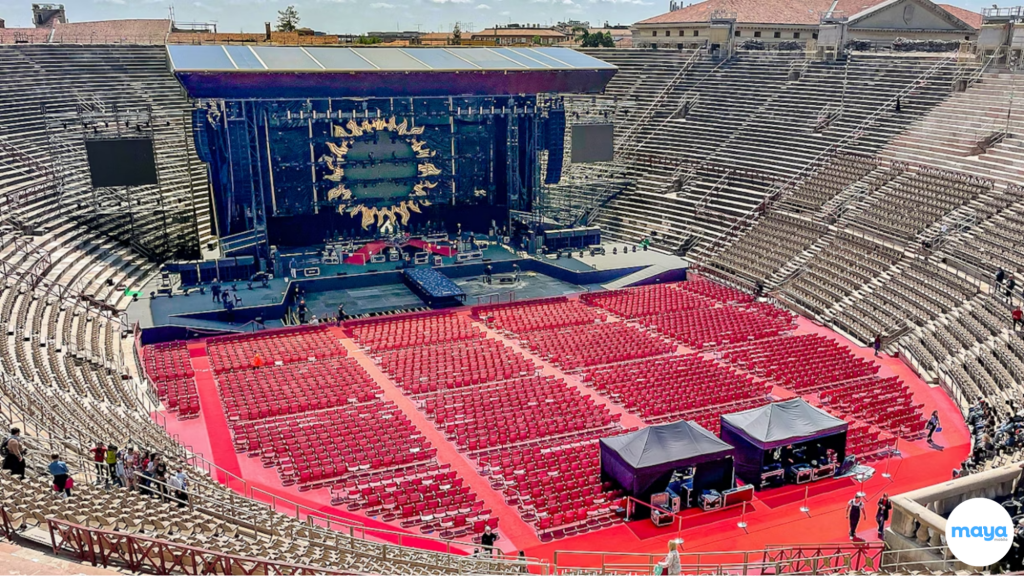

Whether you’re into jazz, classical, or pop, Italy’s summer music scene has something for you. The Arena di Verona hosts opera performances in a massive ancient Roman amphitheater, an unforgettable experience.
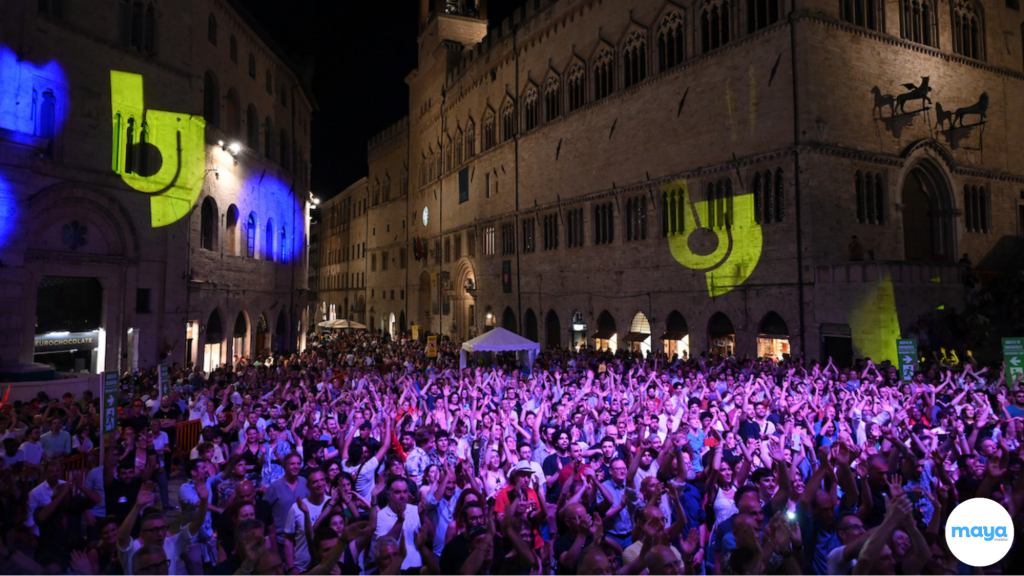

The Umbria Jazz Festival in Perugia draws big names every July, and towns like Lucca and Rome host outdoor concerts that light up warm summer nights.
Venice Film Festival (Late August to Early September)


The Venice Film Festival takes place every year from late August to early September on Lido Island. It’s the oldest film festival in the world, first held in 1932, and it’s still one of the most respected events in international cinema today.
You’ll see a mix of well-known directors and new voices sharing their work. The setting is formal, but it still feels very Italian, with a strong focus on art, culture, and elegance. If you’re in Venice during this time, it’s a great way to experience both film and the city’s unique atmosphere all at once.
Hot Days and Sunny Skies
When summer hits Italy, it’s all about long, sunny days, charming streets, and that effortless vibe. With temperatures reaching 30°C to 35°C in July and August, cities like Florence and Rome can get hot, but coastal areas offer a breeze.
If you prefer milder weather, June and early September are perfect. Italy’s summer is packed with festivals, delicious food, and unforgettable sights, making it the ideal time to experience the country’s magic.
| City | Avg High (°C) | Avg Low (°C) | Peak Temp (°C) | Summer Climate Notes (2021–2024) |
| Rome | 27–30 °C | 17–19 °C | 41.8 °C (July 2023) | Hot and dry; major heat waves have pushed July into the 40s. Historic sites are exposed to full sun. |
| Florence | 28–31 °C | 17–20 °C | 36 °C (July 2022) | Inland heat traps warmth; few breezes. Expect dry, intense heat and crowded piazzas. |
| Venice | 26–29 °C | 18–21 °C | 36 °C (July 2022) | Humid and sticky due to canals. Early morning is best for sightseeing before the city heats up. |
| Milan | 27–30 °C | 17–20 °C | 39 °C (July 2022) | Hot, urban heat island effect; thunderstorms are common in late afternoons. |
| Naples | 28–31 °C | 19–22 °C | 40.2 °C (Aug 2021) | Hot and muggy by the bay. Mount Vesuvius and Pompeii visits should be done early in the day. |
| Palermo (Sicily) | 29–32 °C | 21–24 °C | 43 °C (July 2023) | One of Italy’s hottest cities. Strong sun, limited shade. The coastal breeze offers slight relief. |
| Bologna | 29–33 °C | 18–21 °C | 41.1 °C (Aug 2021) | Often overlooked, but brutally hot in summer. Shade is limited in the medieval center. |
| Lake Como | 25–28 °C | 16–19 °C | 34 °C (rare, July 2022) | Cooler compared to major cities. Great option for scenic relief during the summer peak. |
Must-See Destinations in Italy
Sardinia


Sardinia is a whole different kind of coastal escape. It’s an island, so it feels more remote and untouched. You’ll find wild beaches, crystal-clear water, and quiet coves perfect for a swim or nap under the sun.
It’s less crowded than the Amalfi Coast and has more of a raw, natural beauty. Great for beach lovers, foodies, and anyone who wants to slow down and unplug for a while.
Trentino
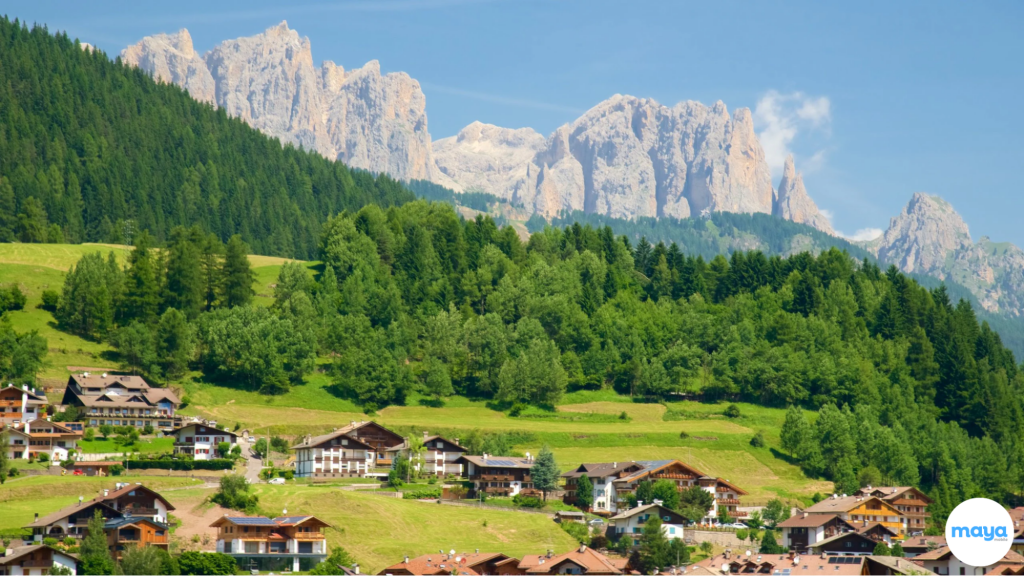

Trentino, in northern Italy, is a region shaped by mountains, forests, and clear alpine lakes. If you’re drawn to nature, it’s a place that offers something in every season, skiing in winter, hiking, and cycling in summer. The landscape is not only beautiful but also well cared for, with a strong focus on sustainability and preserving local traditions.
What makes Trentino stand out is its blend of Italian and Central European influences, seen in everything from the architecture to the food. It’s an ideal destination if you’re looking for a balance of natural beauty, culture, and outdoor experiences.
Amalfi
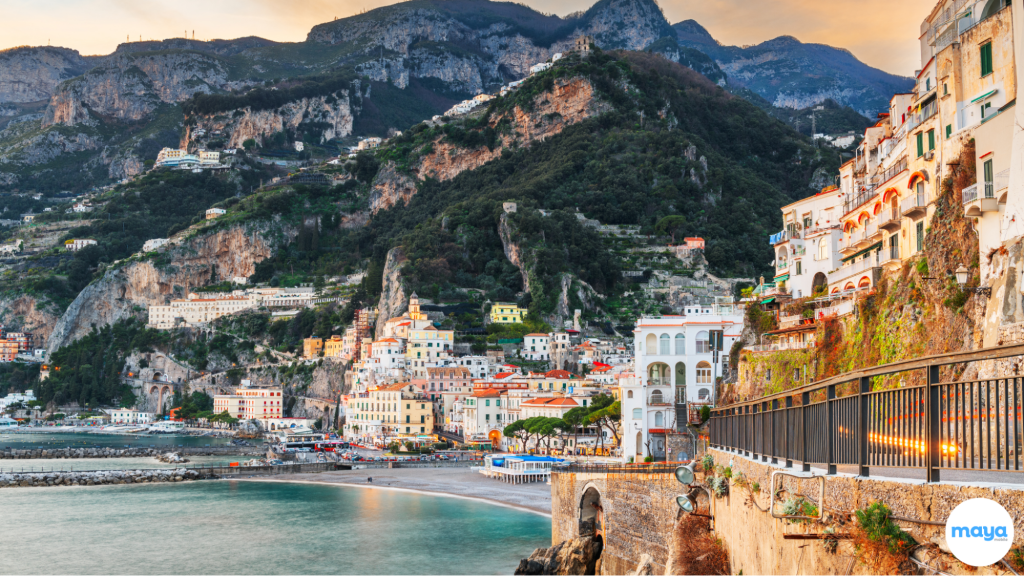

Amalfi is a dreamy little town with steep cliffs, colorful houses, and a charming harbor. It’s perfect for slow strolls, boat rides, and soaking in those classic coastal views.
The town is small, so it can get crowded in summer, but it’s worth a visit for the lemon-scented air, scenic hikes, and relaxed vibes.
Lake Como
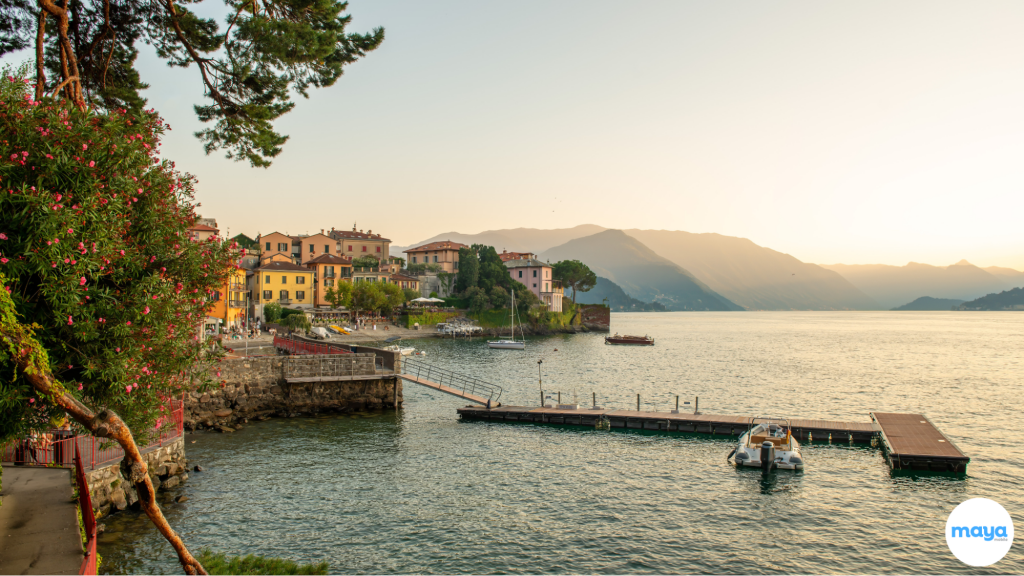

Lake Como, in northern Italy, is a peaceful summer destination known for its clear waters, alpine backdrop, and elegant lakeside towns like Bellagio and Varenna. With average temperatures around 25–28°C, it offers a cooler escape from the inland heat. You can explore the area by ferry, enjoy scenic walks, and visit historic villas such as Villa del Balbianello.
The calm atmosphere, combined with quality dining and well-kept gardens, makes it ideal for a relaxing getaway. For a better experience, consider staying overnight to enjoy quieter evenings after day-trippers leave. It’s a perfect blend of nature, culture, and comfort.
Pisa
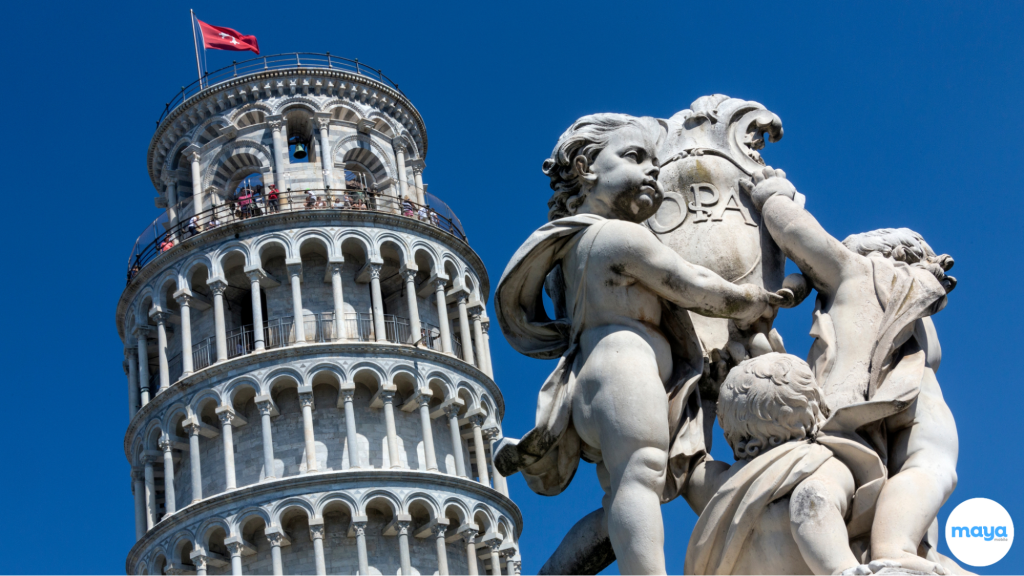

Pisa, located in western Tuscany, is best known for the Leaning Tower, but it offers more than a quick photo stop. Summer temperatures average 29°C to 33°C, so early morning or late afternoon visits are more comfortable. The Piazza dei Miracoli complex includes the tower, the cathedral, the baptistery, and the Camposanto, all fine examples of medieval architecture.
Beyond the main square, Pisa has a historic university, quiet riverside walks along the Arno River, and fewer crowds in the evenings. It’s easy to reach by train from Florence or Lucca, making it a convenient half-day or full-day cultural trip.
Verona
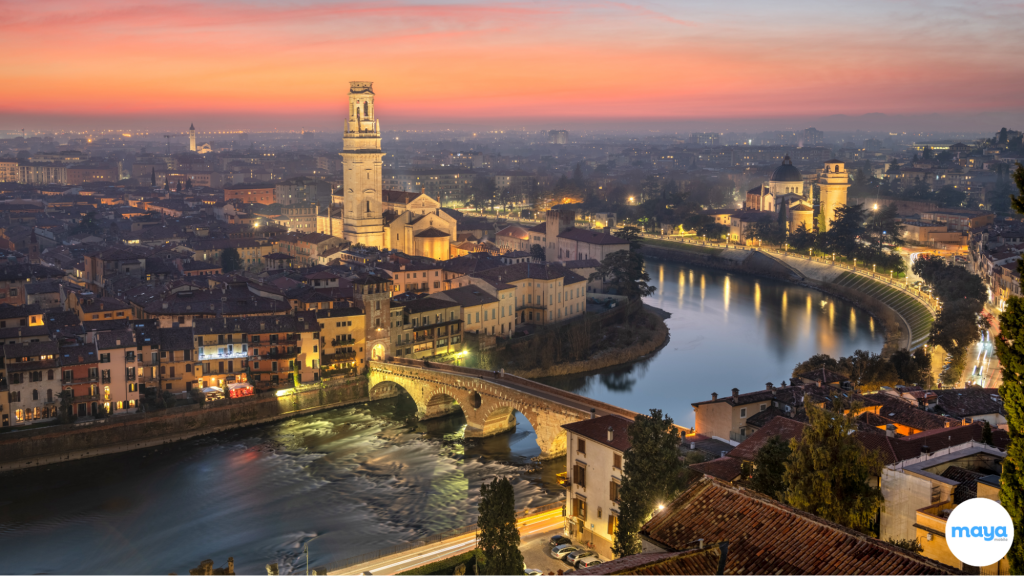

Verona, located in northern Italy’s Veneto region, is a charming city best known for its Roman arena and its connection to Shakespeare’s Romeo and Juliet. Summer temperatures average 28°C to 33°C, with warm days and pleasant evenings. The Verona Arena, a well-preserved Roman amphitheater, hosts open-air opera performances during summer, a unique cultural experience.
Visitors can also explore Piazza delle Erbe, medieval streets, and Juliet’s Balcony. The city is compact and walkable, making it easy to enjoy in a day or two. Verona combines history, architecture, and romance, and is well-connected to Venice, Milan, and Lake Garda by train.
Florence
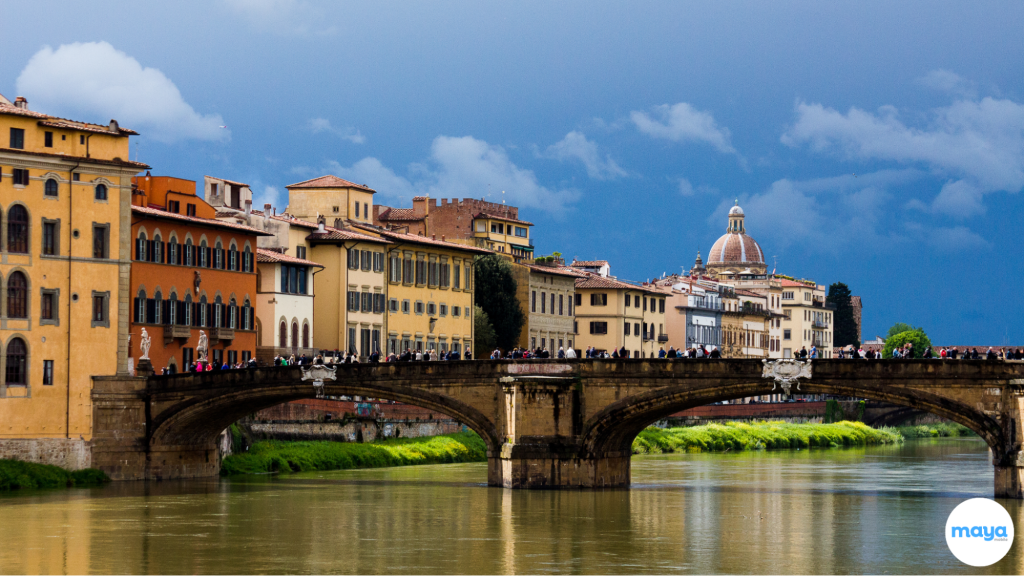

Florence, the capital of Tuscany, is a cultural and artistic landmark, especially vibrant in summer. Temperatures typically range from 30°C to 35°C in July and August, so it’s best to explore early in the day. The city is home to iconic sites such as the Duomo, Uffizi Gallery, and Ponte Vecchio, all rich in Renaissance history.
Despite the heat, Florence remains walkable, with shaded streets and many indoor museums offering relief. Evenings are ideal for outdoor dining in piazzas and along the Arno River. Booking tickets in advance is essential during summer due to high tourist demand.
Positano
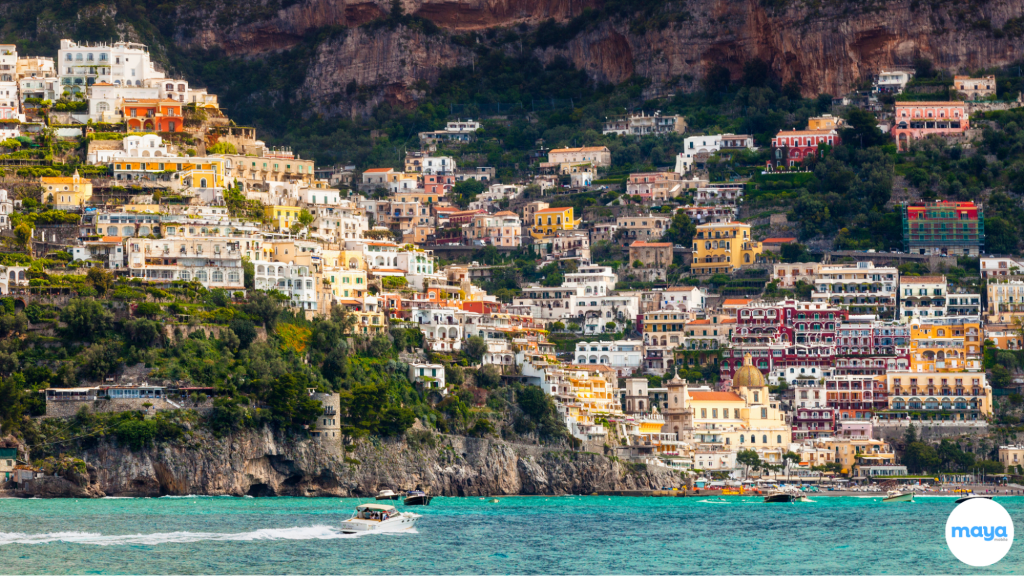

Positano is what most people picture when they think of the Amalfi Coast. The buildings are stacked like a colorful puzzle on the hillside, and every corner feels like it belongs on a postcard.
The beach here is buzzing in summer, with plenty of cafes and boutiques nearby. It’s definitely on the fancy side, but even a day trip can be magical.
Sorrento
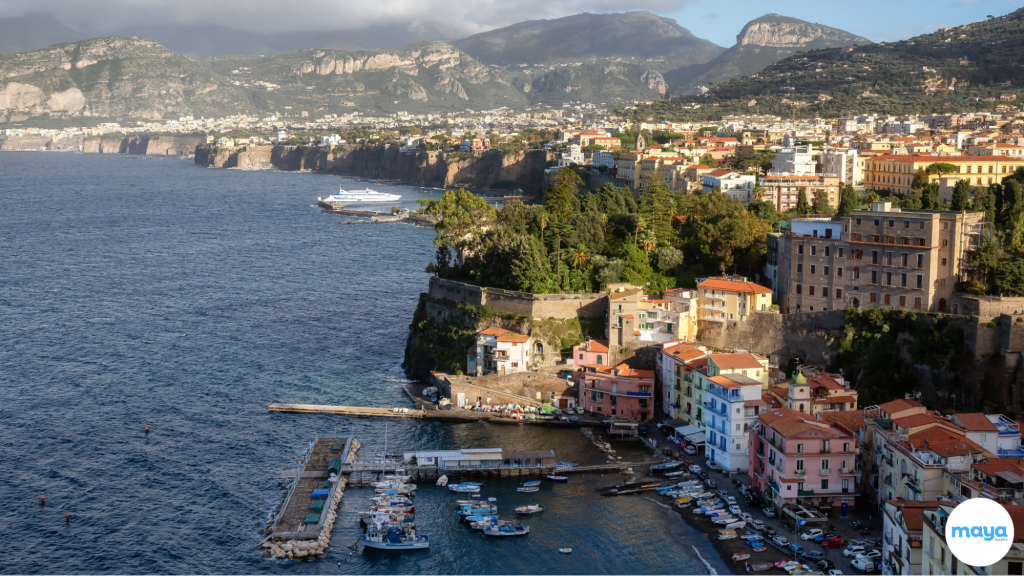

Sorrento is a great base if you want coastal beauty with easy access to other spots like Naples, Capri, or Pompeii. It’s known for its lemons, seriously, they’re huge, and the famous limoncello.
The town has a bit of everything: sea views, lively piazzas, great food, and a relaxed pace that makes summer evenings feel extra special.
Savory Delights You Have to Taste in Italy
Fried Squid with Aioli – Amalfi Coast
Fried squid, known locally as calamari fritti, is a popular coastal dish. It is lightly coated in flour, quickly fried until crisp, and typically served with a lemon wedge and a side of aioli. The contrast between the crunchy exterior and tender inside makes it a favorite during summer months when seafood is at its freshest.
Best Time: Enjoy it as a starter in the early evening, often served with a light drink before dinner.
Health Benefits: Squid is a lean source of protein and contains key minerals like selenium and phosphorus. When paired with a light aioli made from olive oil and garlic, it can be a flavorful yet balanced dish. To keep it healthier, opt for grilled or lightly fried versions and use aioli sparingly.
White Bean Crostini with Anchovy and Lemon Salsa – Tuscany
This Tuscan-style crostini layers creamy white beans on toasted bread, topped with a bright, savory salsa made from anchovies, lemon juice, and herbs. It balances richness and acidity well, making it a popular choice to stimulate the appetite before a full meal.
Best Time: Served as a pre-dinner appetizer, often paired with a chilled glass of white wine.
Health Benefits: White beans are an excellent source of fiber and plant-based protein, supporting digestion and satiety. Anchovies contribute healthy omega-3 fats, while lemon adds a boost of vitamin C. It’s a nutritious and satisfying way to start a meal without being heavy.
Spicy Aubergine Polpette – Sicily
These vegetarian polpette (meatballs) are made with finely chopped aubergine, breadcrumbs, herbs, and spices. Lightly fried or baked, they offer a tender texture with a subtle heat. Often enjoyed as a meat-free alternative, they reflect the resourceful and flavor-driven nature of Sicilian home cooking.
Best Time: Served warm during light evening meals or presented as bite-sized appetizers at gatherings.
Health Benefits: Aubergine is naturally low in calories and rich in antioxidants, particularly nasunin, which supports cell health. These polpettes provide a satisfying vegetarian option, especially when paired with legumes or cheese for added protein.
Burrata with Sticky Roasted Tomatoes, Pine Nuts, and Basil – Puglia
This dish highlights the creamy richness of burrata, a soft cheese made from mozzarella and cream, paired with slow-roasted tomatoes that intensify in sweetness as they cook. Toasted pine nuts add texture, while fresh basil brings aroma and balance. It’s a dish that showcases the quality of southern Italian ingredients with minimal preparation.
Best Time: Perfect for a relaxed summer lunch, especially when served outdoors.
Health Benefits: Burrata is a good source of calcium and protein, supporting bone and muscle health. The tomatoes offer antioxidants like lycopene, while pine nuts provide vitamin E and healthy fats. For a balanced plate, pair this with whole grains or fresh greens.
Spinach Gnudi – Tuscany
Spinach gnudi are delicate dumplings made from ricotta cheese, spinach, and a small amount of flour, similar to the filling of ravioli, but without the pasta. Light and tender, they are usually served with a simple butter and sage sauce or a fresh tomato coulis. The word gnudi means “naked” in Tuscan dialect, referring to their pasta-less form.
Best Time: Best served during a light dinner or as a first course in spring or early summer.
Health Benefits: Spinach is rich in iron, fiber, and vitamins A and K. Ricotta provides protein and calcium while keeping the dish light compared to traditional pasta. Gnudi offers a nutritious, lower-carb alternative for those seeking a balanced meal without compromising flavor.
Spaghetti alle Vongole
Spaghetti alle vongole is a classic seafood pasta made with fresh clams, garlic, olive oil, white wine, and parsley. Some versions include a touch of chili or cherry tomatoes, though the traditional bianco (white) version remains the most authentic. It is known for its clean, briny flavor that highlights the freshness of the seafood.
Best Time: Ideal for a summer dinner or weekend lunch, especially by the sea.
Health Benefits: Clams are low in fat and high in protein, iron, and vitamin B12, which support red blood cell production and energy metabolism. Olive oil provides heart-healthy fats, making this a nutritious choice when prepared without heavy sauces or excess salt.
Strawberry and Mascarpone Gelato (No-Churn)
This no-churn gelato blends ripe strawberries with mascarpone cheese to create a smooth, creamy dessert without the need for an ice cream machine. The richness of the mascarpone complements the natural sweetness and acidity of the strawberries, offering a balanced and indulgent treat.
Best Time: Perfect for warm afternoons or as a refreshing dessert after a summer meal.
Health Benefits: Strawberries are rich in vitamin C, antioxidants, and fiber, supporting immune health and digestion. Mascarpone is high in calcium and provides a creamy texture, though it is calorie-dense. For a lighter version, reduce the sugar and serve smaller portions.
Classic Negroni Cocktail
The Negroni is a classic Italian cocktail made with equal parts gin, red vermouth, and Campari, stirred over ice and typically garnished with an orange slice. It was first created in Florence in the early 20th century and has since become a symbol of Italian aperitivo culture, bitter, balanced, and designed to awaken the palate.
Best Time: Traditionally served as an aperitivo before dinner.
Health Benefits: While alcoholic, the Negroni contains red vermouth, which offers small amounts of antioxidants. That said, it is best enjoyed in moderation; one serving is sufficient to complement a meal without exceeding the recommended alcohol intake.
Now that you’ve got a taste of Italy’s summer charm, from the festivals to the unforgettable flavors, let’s switch gears and explore what Turkey has to offer. From the vibrant energy of Istanbul to the stunning beaches of Marmaris, Turkey’s summer experience is just as exciting and full of its own unique charm.
Unforgettable Summer in Turkey
There’s something unique about summer in Turkey. Imagine stepping into a world where ancient cities cast their shadows on you, then finding yourself diving into crystal-clear waters under the blazing sun. Mornings begin with the aroma of fresh bread and strong tea, and by midday, you’re lost in vibrant bazaars, surrounded by a symphony of colors, sounds, and spices.
For first-time flyers, Turkey is a perfect introduction to a place where history and everyday life blend seamlessly. Coastlines stretch for miles, and every meal feels like something worth slowing down for. Whether you’re chasing sunsets or street food, summer here isn’t just a trip; it’s a feeling. Let’s take a look at what makes it so unforgettable.
What Awaits You in Turkey This Summer
Istanbul International Music and Art Festivals
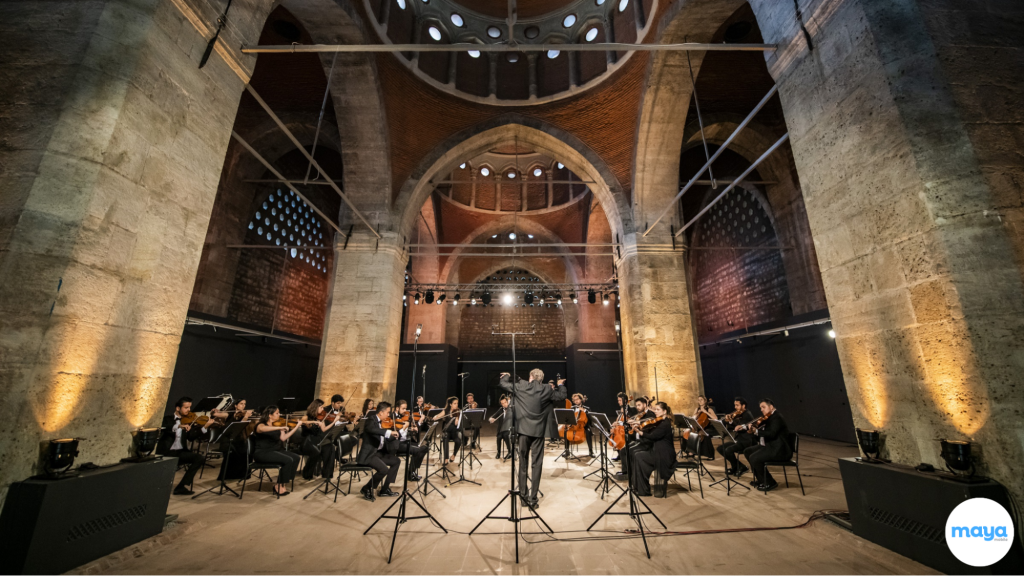

Summer in Istanbul isn’t just about the views; it’s about the sound, the rhythm, the art in the air. Every year, the city lights up with world-class music and art festivals that bring people together across styles and cultures. From classical concerts in centuries-old venues to contemporary art shows tucked into hidden corners of the city, there’s always something happening.
The Istanbul Music Festival (June) and Istanbul Jazz Festival (July) are the big names, drawing global talent and packed audiences. Then there’s the Istanbul Biennial and smaller art pop-ups that turn the city into one big creative space. It’s the kind of energy you feel everywhere, from rooftop bars to quiet gallery halls.
Oil Wrestling


Now here’s something you won’t see anywhere else: Turkish oil wrestling, or Yağlı Güreş, one of the country’s oldest and most unique sporting traditions. It’s exactly what it sounds like: wrestlers, covered in olive oil from head to toe, facing off in grassy fields under the summer sun.
The most famous event happens in Edirne every July, known as Kırkpınar, and it’s been going strong for over 650 years. There’s music, food, and crowds cheering; it feels more like a festival than a competition. Whether you’re into sports or just curious about deep-rooted traditions, this is a summer spectacle worth seeing up close.
Cappadocia Balloon Festival


Waking up before sunrise in Cappadocia has its rewards, and the Cappadocia Balloon Festival makes it even more magical. Held every summer, this event fills the sky with dozens of colorful hot air balloons drifting over the region’s surreal landscape of valleys and rock formations.
It’s more than just a beautiful view. There’s music, local food, night glow shows where the balloons light up in sync, and a festive vibe that brings the whole area to life. Whether you’re in the sky or watching from the ground, it’s the kind of moment that makes you pause, take it in, and never forget it.
Bodrum Ballet Festival


Summer nights in Bodrum come with their own kind of magic, and the Bodrum Ballet Festival captures it perfectly. Held every August at the historic Bodrum Castle, this open-air event brings together top ballet companies from Turkey and around the world.
Set against the backdrop of the Aegean Sea, the performances unfold under the stars, with warm breezes and the sound of waves in the distance. From timeless classics to modern choreography, it’s a graceful escape from the summer crowds. If you’re in Bodrum during the season, this festival is an experience you won’t want to miss.
Hot Days and Sunny Skies – Turkey
Summer in Turkey brings serious heat, especially in July and August, with temperatures reaching 30–36°C (mid-80s to high 90s °F). Coastal spots like Antalya and Bodrum stay hot but breezy, perfect for beach days. Inland areas such as Cappadocia and Ankara are drier, with cooler evenings.
For a more comfortable experience, plan your visit in June or early September; plenty of sun, lighter crowds, and warm weather that’s easier to enjoy without the peak-season intensity.
| City | Avg High (°C) | Avg Low (°C) | Peak Temp (°C) | Summer Climate Notes (2021–2024) |
| Istanbul | 28–31 °C | 19–22 °C | 37.2 °C(July 2023) | Hot and humid, especially in July. The sea breeze offers some relief. Best explored early or late in the day to avoid midday heat. |
| Cappadocia | 30–34 °C | 14–17 °C | 40.5 °C(Aug 2021) | Dry heat with large day-night temperature swings. Mornings are cool—ideal for balloon rides. Shade is limited in open landscapes. |
| Antalya | 32–36 °C | 22–25 °C | 44.4 °C(July 2023) | Extremely hot and sunny with high humidity. Coastal breeze helps, but afternoons can be intense. Best for beach activities and evenings out. |
| Bodrum | 30–34 °C | 21–24 °C | 41.1 °C(Aug 2022) | Hot and dry with strong sun. Coastal air offers comfort, but the midday sun is harsh. Evenings are pleasant and ideal for seaside dining. |
| Izmir | 31–35 °C | 20–23 °C | 42 °C(July 2023) | Very hot inland with dry conditions. Urban areas feel warmer due to pavement heat. Peak temperatures are common in July and early August. |
| Ankara | 30–34 °C | 16–19 °C | 40.1 °C(Aug 2021) | Hot but less humid. Dry, with cooler nights. The sun is intense during the day. Less tourist traffic, but heat remains a concern. |
| Trabzon | 26–29 °C | 18–21 °C | 33 °C(rare, July 2022) | Milder and more humid than central Turkey. Frequent afternoon clouds and occasional rain. Comfortable for outdoor sightseeing and coastal walks. |
| Gaziantep | 34–38 °C | 20–23 °C | 44 °C(July 2022) | Among the hottest cities in Turkey. Dry heat, little shade. Sightseeing is best done early in the day; avoid long outdoor activities after noon. |
Must-See Sights in Turkey
Istanbul
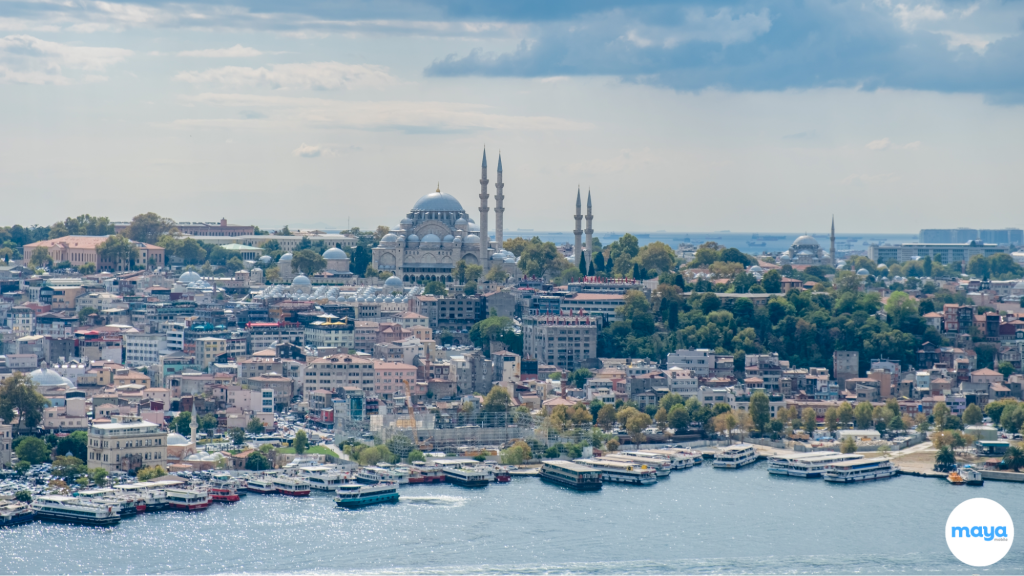

Istanbul in summer is a vibrant mix of history, culture, and energy. Daytime temperatures range from 28°C to 31°C, with warm nights and high humidity, especially in July and August. The sea breeze offers some relief, but exploring early in the day or after sunset is best. Despite the heat, the city stays alive, ferries packed with commuters, rooftop cafés buzzing, and open-air concerts lighting up the evenings.
From ancient landmarks like Hagia Sophia and the Blue Mosque to bustling bazaars, art festivals, and Bosphorus cruises, Istanbul offers something every hour of the day. It’s a city where summer never feels quiet.
Marmaris
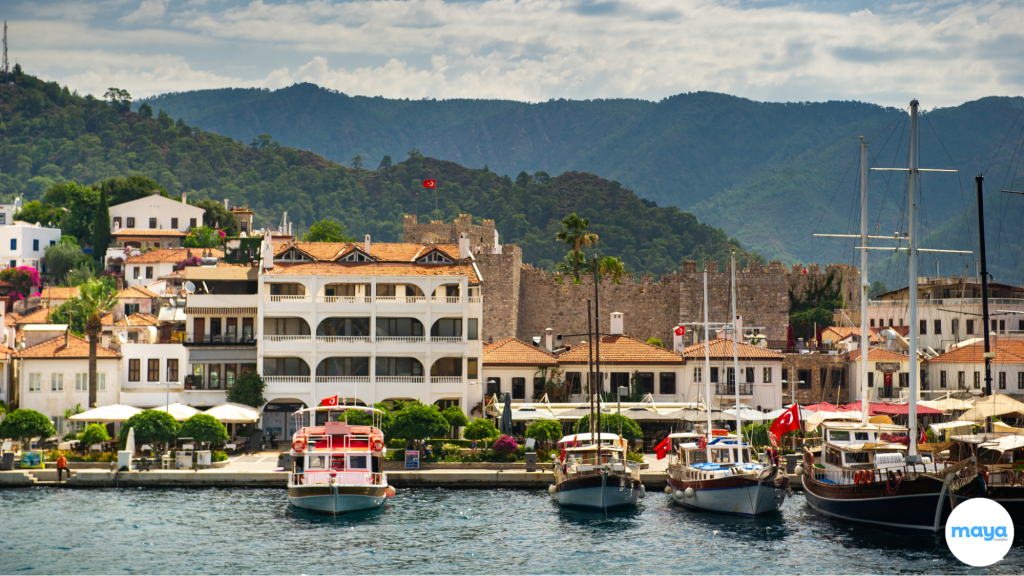

Marmaris, located on Turkey’s southwest coast, is known for its lively beaches, clear waters, and pine-covered hills. Summer temperatures average around 30°C to 35°C, with warm, breezy evenings. Thanks to its coastal location, the heat is more manageable, but the best times to explore are early in the morning or later in the afternoon.
Beyond the beaches, Marmaris has a vibrant marina, a charming old town with a small castle, and plenty of seaside restaurants. You can also take day trips to places like Dalyan, Cleopatra Island, or Marmaris National Park. It’s easy to reach by road or ferry, making it a popular spot for a relaxed summer getaway.
Ephesus
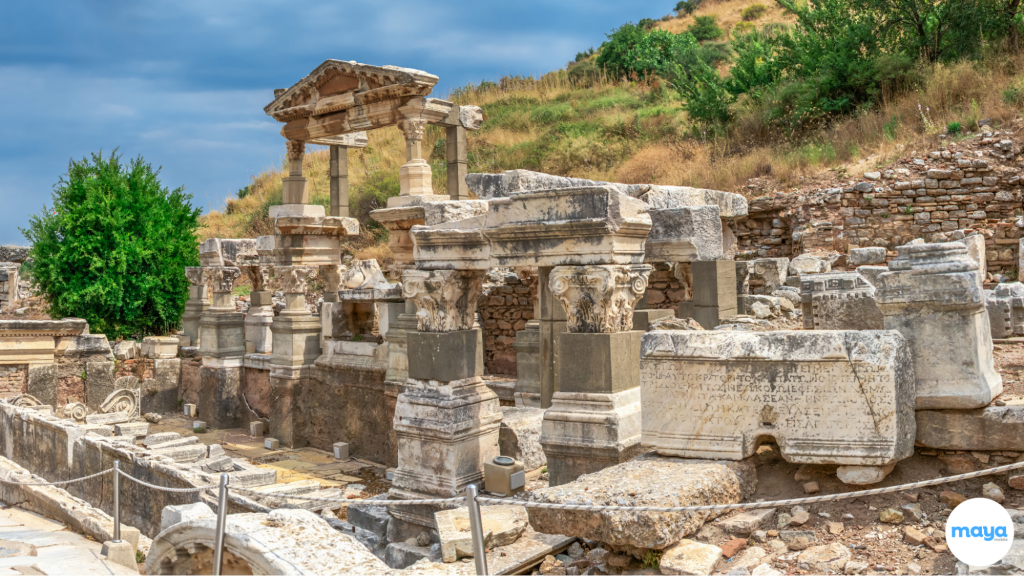

Ephesus, located near the town of Selçuk in western Turkey, is one of the most impressive ancient sites in the country and a must-visit during summer. Temperatures in July and August often reach 34°C to 38°C, with little shade throughout the site, so early morning visits are strongly recommended.
The sun is intense, but the scale and detail of what remains, from the Library of Celsus to the Great Theatre, make it worth every step. Even in the summer heat, Ephesus draws visitors from around the world. Nearby, you can cool off in Şirince village or the beaches of Kuşadası. It’s history, scenery, and summer heat, all in one.
Antalya
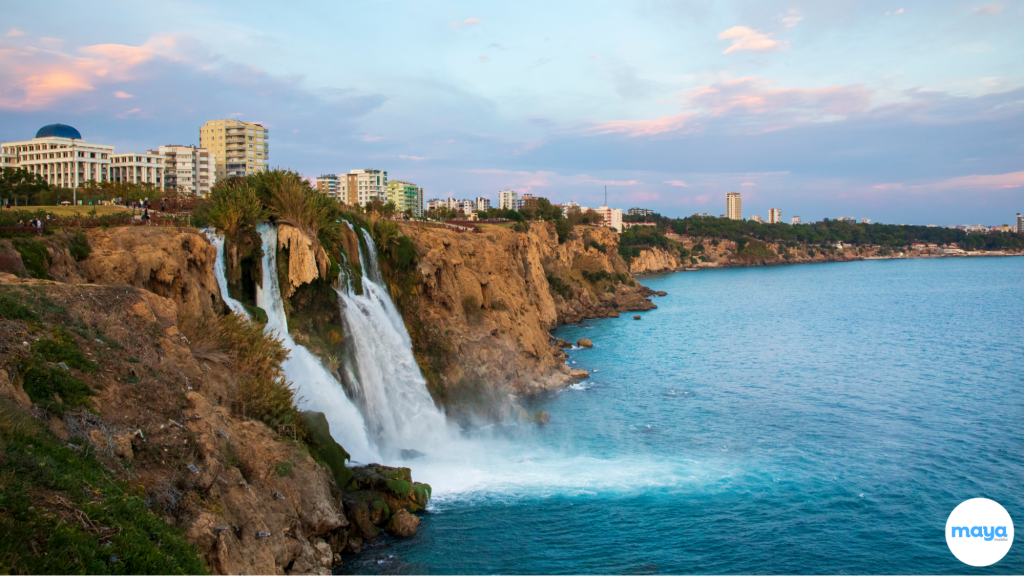

Antalya, Turkey’s “capital of tourism,” experiences hot and sunny weather from June to August, with daytime temperatures averaging 30°C to 34 °C (86–93 °F) and nights around 22°C to 24 °C (72–75 °F). Rain is minimal, less than one day per month, while sea temperatures peak at 27°C to 29 °C (80–84 °F), ideal for swimming.
The long, bright days and warm waters make Antalya perfect for beach lounging, boat trips, and water sports. Explore the historic Kaleiçi old town with its layers of Roman and Ottoman architecture, then unwind at seaside cafés. Peak summer brings vibrant energy. If you prefer warmth without the crowds, consider visiting in June or September when it’s just right.
Pamukkale
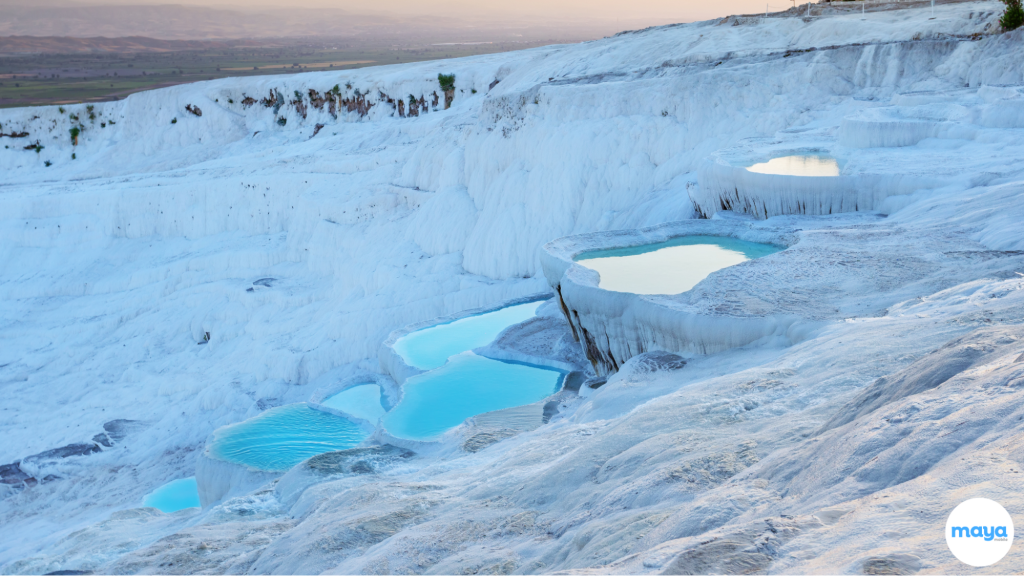

Pamukkale, located in southwestern Turkey, is famous for its striking white travertine terraces and thermal springs. Summer temperatures here can reach 34°C to 38°C, especially in July and August, with dry heat and intense midday sun. It’s best to visit early in the morning or late in the afternoon when the sun is lower and the light adds an extra glow to the landscape.
Beyond the terraces, you can explore the nearby ancient city of Hierapolis, including its well-preserved theater and Roman baths. While summer is peak season, it’s still possible to enjoy Pamukkale’s beauty with a bit of timing and plenty of water.
Delicious Dishes You Shouldn’t Miss in Turkey
Maraş Ice Cream
Maraş ice cream, or Maraş dondurması, stands out for its chewy, stretchy texture. Made with goat’s milk, sugar, salep (orchid root flour), and mastic, it’s thick, rich, and slow to melt, served in slices or cones, often with a side of fun from theatrical street vendors.
Best Time: Perfect as a mid-afternoon treat or a refreshing dessert after dinner, especially on hot summer days.
Health Benefits: Made with goat’s milk, easier to digest than cow’s milk ice cream. It’s also lower in fat but still rich in flavor. Just keep portions moderate, as it’s dense and high in natural sugars.
Ayran
Ayran is Turkey’s classic yogurt-based drink, made by blending plain yogurt with cold water and a pinch of salt. Served chilled and frothy, it’s simple, refreshing, and perfectly suited to the country’s summer heat. It balances rich, spicy foods and is often served alongside kebabs, gözleme, or rice dishes.
Best Time: Enjoy it midday with grilled meats or as a cooling drink on hot afternoons.
Health Benefits: Ayran is packed with probiotics, calcium, and electrolytes, making it great for digestion and hydration. Choose versions without added thickeners for the cleanest, most natural option.
Turkish Delight
Turkish Delight, or lokum, is a soft, chewy sweet made from sugar, starch, and flavorings like rosewater, lemon, or mastic. Often filled with pistachios or walnuts, it’s dusted with powdered sugar or coconut flakes and presented in elegant boxes, especially during holidays and special occasions.
Best Time: Best enjoyed as an afternoon treat with Turkish tea or offered as a sweet gift after meals.
Health Benefits: Turkish Delight is naturally gluten-free and can be a good source of healthy fats, especially when made with ingredients like walnuts or pistachios. For a slightly lighter option, look for versions made with natural ingredients or those that focus on fewer processed additives.
Acili Ezme
Acili Ezme is a spicy Turkish condiment made from finely chopped tomatoes, onions, green peppers, and herbs, dressed with olive oil, lemon juice, and red pepper paste. Its tangy and spicy flavor makes it a perfect accompaniment to grilled meats, kebabs, or as part of a mezze platter.
Best Time: Ideal as a starter in the early evening, often served with a light drink before dinner.
Health Benefits: Packed with fresh vegetables and olive oil, Acili Ezme is rich in vitamins and antioxidants. Enjoy it as a flavorful and nutritious addition to your meal.
Barbunya Pilaki
Barbunya Pilaki is a Turkish dish featuring borlotti beans cooked in olive oil with tomatoes, onions, carrots, and garlic. It’s typically served cold or at room temperature, making it a refreshing addition to any meal.
Best Time: Ideal as a starter in the early evening, often served with a light drink before dinner.
Health Benefits: Rich in fiber and antioxidants, Barbunya Pilaki is a nutritious choice. Enjoy it as part of a balanced diet.
Tavuk Sote
Tavuk Sote is a classic Turkish dish featuring bite-sized pieces of chicken sautéed with onions, peppers, tomatoes, and a blend of spices. It’s typically served with rice or bulgur pilaf, making it a satisfying and flavorful meal.
Best Time: Ideal for a hearty lunch or a comforting dinner, especially during the cooler months.
Health Benefits: Opt for lean cuts of chicken and moderate the use of oil to keep the dish light. Pairing it with whole grains like bulgur can add fiber and enhance its nutritional value.
Adana Kebab
Adana Kebab is a fiery and flavorful dish made with minced lamb, spices, and tail fat, skewered and grilled over open flames. It’s typically served with flatbread, grilled vegetables, and a tangy onion-parsley salad, making it a satisfying and hearty meal.
Best Time: Ideal for a satisfying lunch or dinner, perfect for any time of year.
Health Benefits: While rich in flavor, Adana Kebab can be enjoyed in moderation. Opt for leaner cuts of lamb or serve it with plenty of grilled vegetables to balance the meal and keep it lighter.
Your Perfect Summer Adventure Awaits with Maya Mobile
No matter whether you choose Italy or Turkey for your summer escape, both destinations offer unforgettable experiences. From breathtaking landscapes to mouthwatering cuisine, there’s so much to explore.
And, with Maya Mobile, you’ll stay connected seamlessly throughout your travels, making it easy to navigate, share moments, and discover hidden gems. Now, it’s time to pick your destination and let the adventure begin!
Related Reads
FAQs on Summer in Italy vs. Turkey
1. Is July 2025 a good time to visit Italy?
The best months to visit Italy are April-June and September-November, when the weather is mild and the crowds are smaller. July and August can be very hot and crowded, while many businesses close down for the winter from December to February.
2. What is happening in Italy in July 2025?
Siena Palio 2025 – As possibly Italy’s most famous festival, and certainly one of its oldest, the Siena Palio takes place not once but twice a year! Both 2 July and 16 August. The Palio in July is the Palio of Provenzano, in honor of the Madonna of Provenzano.
3. Should I go to Italy in September 2025?
Italy in September offers a delightful blend of lingering summer warmth and the first hints of autumn’s coolness. This transitional month is a wonderful time to enjoy fine wines and experience cultural events unique to the season.
4. Is Turkey good to visit in the summer?
The best time to visit Turkey is in the summer months, June to August, for crystal clear waters, traditional gület rides, and hot air ballooning over Cappadocia.
5. What is the best month to visit Turkey?
April, May, September, and October are pleasantly warm, with temperatures of 68°F to 86°F, so these are typically the best times to visit Turkey’s grand array of ancient sites. The summer months (June through to September) are very hot, with temperatures reaching the mid-thirties on the south coast.




